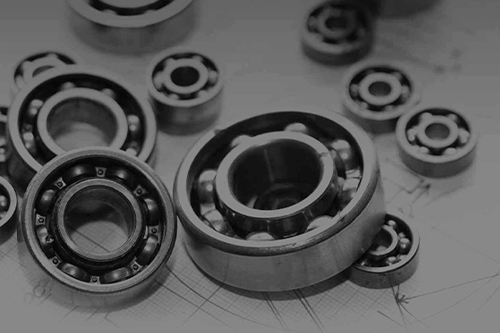Industry trends
Product Introduction
The fault diagnosis technology of ball bearings mainly includes vibration diagnosis technology, ferrography diagnosis technology, temperature diagnosis technology, acoustic diagnosis technology, oil film resistance diagnosis technology, and optical fiber monitoring diagnosis technology. Among them, vibration, iron laying, and temperature diagnosis technology are widely used.
1. Vibration diagnosis technology: When fatigue peeling, indentation, or local corrosion occurs on the working surface of bearing components, periodic pulse signals will appear during the operation of ball bearings. This periodic signal can be received by sensors (velocity type or acceleration type) installed on the bearing seat, and the fault of the bearing can be diagnosed by analyzing the vibration signal.
Features: Vibration diagnosis technology is widely used; Can achieve online monitoring; Fast diagnosis, mature diagnostic theory, and application range: particularly suitable for fault monitoring of bearings in rotating machinery
2. Ferrography diagnosis technology has a close relationship between bearing wear particles and their working conditions. Lubricating oil with wear particles is passed through a strong magnetic field, and under the action of the strong magnetic field, the wear particles precipitate on a ferrograph according to a certain pattern. The ferrograph can be qualitatively observed on a ferrograph microscope or tested on a quantitative instrument to determine the working condition of the bearing.
Features: The machine does not require disassembly; Low investment, good results; Early fatigue failure of bearings can be detected; Can conduct research on wear mechanism.
Application scope: Suitable for fault diagnosis of bearings lubricated with lubricating oil, which is more difficult for bearings lubricated with grease.
3. Oil film resistance diagnostic technology
A well lubricated bearing has a high resistance between the inner and outer rings due to the action of the oil film. Therefore, by measuring the resistance of the inner and outer rings of the bearing, the abnormality of the bearing can be judged.
Characteristics: The same evaluation criteria can be used for different operating conditions. The diagnostic effect on surface peeling, indentation, cracks and other abnormalities is poor. Application range: Suitable for situations where the rotating shaft is exposed.
4. Fiber optic monitoring and diagnosis technology
Fiber optic monitoring is a diagnostic technique that directly extracts signals from the surface of bearing rings. The displacement sensor made of Optical fiber bundles comprises a transmitting fiber bundle and a receiving fiber bundle. The light is reflected back by the transmitting fiber bundle passing through the gap between the sensor end face and the bearing ring surface, received by the receiving fiber bundle, and converted into electrical signals by photoelectric elements. By analyzing and processing the electrical signals, the bearing working condition can be evaluated.
Features: Fiber optic displacement sensor has high sensitivity; Directly extracting signals from the bearing surface improves signal-to-noise ratio; It can directly reflect the manufacturing quality, surface wear degree, load, lubrication, and clearance of ball bearings.
Application scope: Suitable for machines that can install sensors in bearing seats.
5. Temperature diagnosis technology
If a certain abnormality occurs in the bearing, the temperature of the bearing will change. Therefore, based on temperature changes, ball bearing faults can be diagnosed, but the ability to diagnose anomalies is very low.
Features: Simple diagnosis; The judgment effect on bearing burns is good.
Application scope: Suitable for simple routine diagnosis of bearings in machines.
6. Acoustic emission diagnostic technology
Metal materials require the release of elastic waves due to internal lattice dislocations, grain boundary slip, or the occurrence and development of internal cracks, which is called acoustic emission phenomenon. When ball bearings experience peeling or cracking, different types of acoustic emission signals are generated, which can be used to evaluate the bearing condition.
Features: Quick and simple diagnosis; Can be monitored online Application scope: New technologies developed in recent years have been less applied in bearing condition monitoring.

It is a comprehensive bearing enterprise engaged in production, research and development, and inventory sales.
After nearly two decades of development, the company has evolved into an integrated production and sales model, specializing in the wholesale distribution of the flagship product, the "complete series of large 0-9 class bearings." Existing inventory combines market , sales, and inventory to facilitate an "integrity, cooperation, and win-win" principle in developing the market. This ensures mutual benefits for both customers and the company.
- Bearing selection service.
- Private customization of solutions.
- Perfect service and sufficient inventory.
- 7 * 24 hours, just waiting for you.





 +86 13210465778
+86 13210465778
Leave A Reply